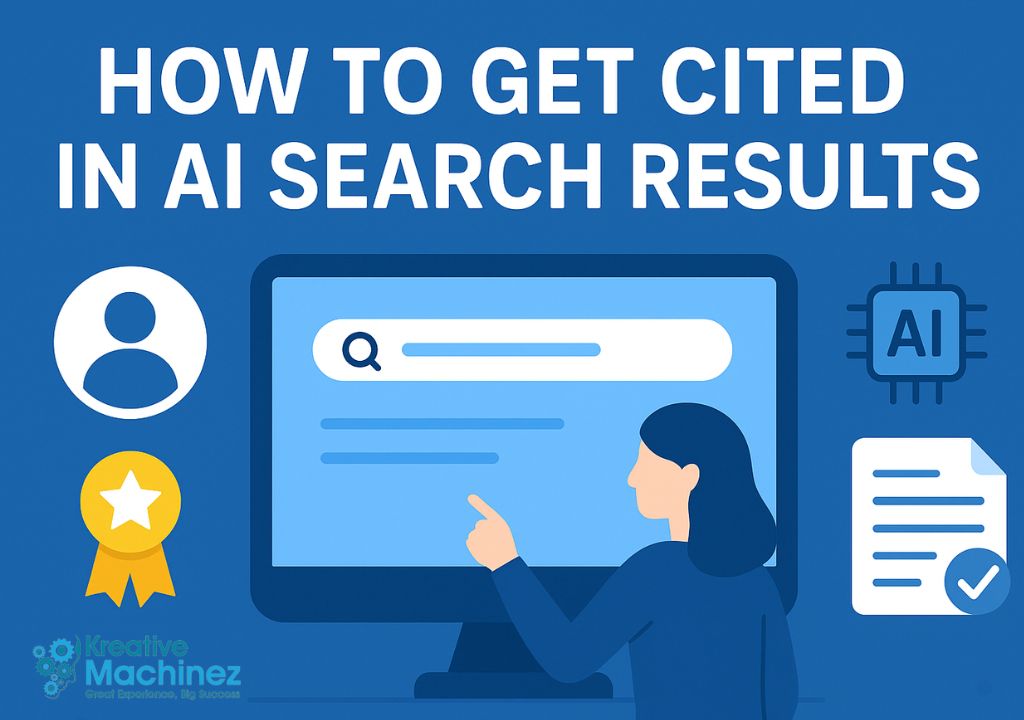Search hasn’t disappeared. But how your content gets discovered has shifted.
AI platforms like ChatGPT, Gemini, Copilot, and Perplexity now serve as intermediaries. They don’t list websites. They scan content, extract useful parts, and generate conversational responses.
Your audience might interact with your ideas without ever clicking your link.
That introduces a new layer of SEO. Instead of only trying to rank high, you now need your content to be understood and selected by AI tools. It’s not about keywords and backlinks alone anymore. It’s about clarity, context, and structure.
AI SEO helps you adapt to that change.
AI SEO focuses on content selection, not just ranking
AI tools don't rely solely on traditional search rankings. They focus on usefulness and intent-matching.
Sometimes, a blog that ranks #8 gets picked for a summary while the top result gets skipped. Why? The model finds one more concise, more structured, or easier to quote.
Your content needs to feel complete in small parts. It should anticipate the kinds of questions people ask conversationally. And it needs to provide clear, modular answers that make sense out of context.
That’s why AI SEO is less about climbing a list, and more about becoming a trusted building block in the model’s response.
Content structure now defines extractability
Generative models work differently from human readers. They don’t scan your whole page like a person would. They look for distinct segments they can lift, understand, and reuse without needing more context.
To support that, your structure must be intentional. H2s should summarize the section’s takeaway. Paragraphs should stay short and focused. Bullet points and clean formatting help models map your ideas quickly.
Think of every block of content as a potential answer. The easier it is to isolate and reframe, the better its chances of inclusion.
Authority is shown through topic clustering and consistency
A single article rarely builds trust. AI tools pay attention to whether you’ve covered a topic deeply and from multiple angles.
For example, if your site has one blog on “social media strategy,” it may be seen as surface-level. But if you’ve also covered platform-specific tactics, analytics, campaign types, audience research, and industry trends (and linked those pages together), models get a stronger sense of your subject authority.
It’s not about volume. It’s about coherence. Clusters give your content thematic weight, which can influence selection in AI-generated outputs.
Fresh, accurate content earns greater AI visibility
AI tools favor timely information, especially when users are searching for guidance based on current trends or fast-changing technology.
But freshness doesn’t mean constantly publishing new pieces. It means making what you already have more reliable. Update examples, replace outdated tools, clarify phrasing, and remove information that no longer applies.
Recency, accuracy, and context all contribute to whether content gets picked. A blog that’s two years old but maintained with care can outperform a brand-new post written in a hurry.
Schema still gives structure that machines recognize
Structured data helps AI understand your content’s function—not just its message.
Schema types like FAQPage, HowTo, and Article offer extra signals about what each part of your content does. While not every AI model uses this metadata the same way, structured pages tend to get parsed more cleanly.
It’s not a guarantee, but schema increases your chances of alignment between how a machine interprets your page and how a human intended to read it. That reduces confusion and enhances extractability.
Clear, human tone increases the likelihood of being quoted
When AI tools pick which content to show or paraphrase, they often choose the one that sounds most natural to a reader.
That means ditching robotic templates. Talk like a person explaining something to someone who genuinely asked. Shorter sentences, natural phrasing, and clear examples work well here.
Avoid marketing speak. Avoid keyword stuffing. The more your content sounds like a real, useful answer, the more likely it is to be used as one.
And when multiple sources say the same thing, tone is often the tiebreaker.
Off-site mentions signal real-world trust
AI models pull from more than just your website. Mentions in newsletters, blog roundups, forums, or expert summaries can all influence trust, especially if they appear on sources the model has already learned from.
You don’t need to chase every backlink opportunity. Focus on being cited in places that already discuss your topic authentically.
When someone references your content in a Reddit thread or uses your explanation in their own article, it sends a signal that real people value your insight. AI engines pick up on that pattern.
Internal links create a clearer map of your authority
Internal links don’t just help humans navigate your site. They also help machines connect your ideas.
When your blog on “AI content tools” links to pages about prompt design, content workflows, and content audit checklists, it paints a picture of depth. Models interpret those relationships as part of how your expertise is structured.
Avoid linking just for SEO’s sake. Focus on building paths between useful content. It helps crawlers. It helps readers. And it helps AI summarize your contribution accurately.
Voice search and multimodal AI favor content that sounds good aloud
As AI tools become voice-enabled and multimodal, how your content sounds begins to matter.
Write as if your paragraph might be read aloud in response to a spoken question. That means tighter syntax, fewer clauses, and more rhythm in your word choices.
Reading your copy out loud is a great test. If it sounds helpful and fluid, it will likely be easier for a machine to convert into a spoken or summarized answer.
It’s less about formality, more about flow.
AI inclusion doesn’t always show up as direct traffic
AI visibility often leaves a quiet footprint. You may not see a spike in traffic. But you might notice more branded searches, unexpected backlinks, or newsletter mentions you didn’t pitch for.
These clues hint at inclusion in summaries generated by tools that don’t directly send traffic.
Keep an eye on impressions, referral traffic sources, and behavior changes.
If more people are looking you up or reading an old blog post again, AI tools might be helping you, even if you can’t trace every step.
Workflows must evolve across writing, editing, and strategy
AI SEO isn’t one person’s job. It requires cross-team alignment.
Writers need to think in segments and modules. Editors need to check for clarity, formatting, and readability. Strategists need to plan around topics that people care about, not just keywords.
It helps to build your process around the idea of reuse. Can a paragraph stand alone? Can a heading summarize a section? Can an insight show up in a summary without getting lost?
These questions shape how well your content performs, not just in search, but in conversation.
Final Thoughts
AI SEO adds a new dimension to content visibility. Instead of chasing rankings alone, you now design for reuse, clarity, and modularity.
The tools people trust—whether it’s ChatGPT, Perplexity, or Google’s AI Overviews—favor content that feels useful, current, and easy to extract.
We help clients adapt their content to this shift through topic clusters, structured design, ongoing content reviews, and strategies that support discoverability across both traditional and AI-driven platforms.
The core idea stays the same: be helpful. But how you express that help—and how it’s interpreted—now depends on both humans and machines. For expert guidance tailored to these changes, consider partnering with the best SEO company in Kolkata to keep your content competitive in an AI-driven search landscape.








